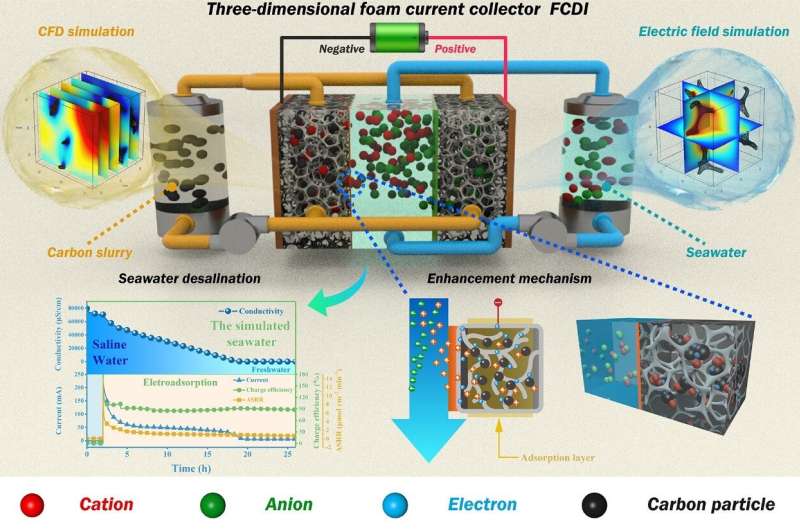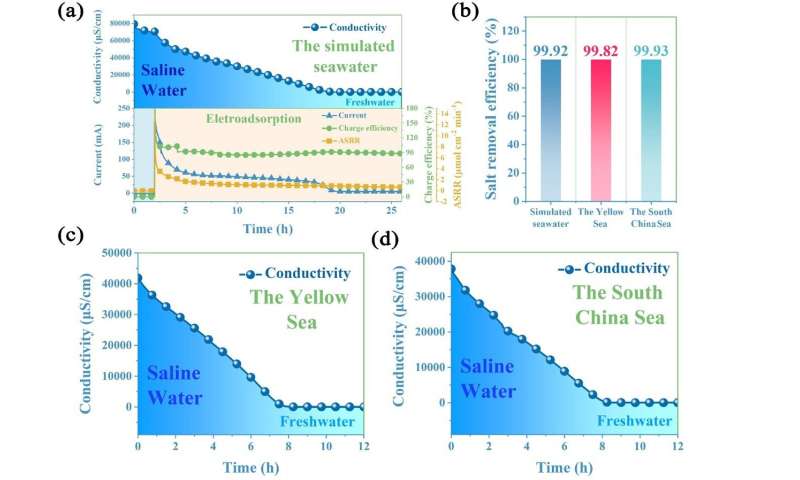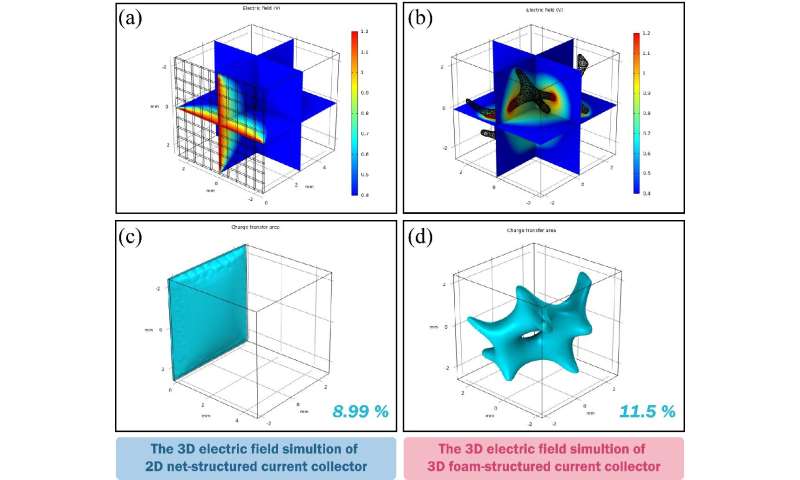

Novel 3D foam current collector developed for desalination
source link: https://techxplore.com/news/2022-06-3d-foam-current-collector-desalination.html
Go to the source link to view the article. You can view the picture content, updated content and better typesetting reading experience. If the link is broken, please click the button below to view the snapshot at that time.
June 20, 2022
Novel 3D foam current collector developed for desalination
by Zhang Nannan, Chinese Academy of Sciences

A research group at the Hefei Institutes of Physical Science (HFIPS) of the Chinese Academy of Sciences has developed a flow-electrode capacitive desalination technology with a three-dimensional (3D) foam current collector for real seawater desalination. Their study was published in Water Research.
The flow electrode capacitive desalination (FCDI) technique, as a novel water treatment technology, has attracted great attention for seawater desalination. Traditional FCDI devices suffer from low charge transfer capacity and unsatisfied salt removal rate. Therefore, exploring new current collectors to improve the charge transfer capacity and electric field distribution of FCDI devices is an urgent need.
The 3D electric method has been considered as an effective solution to amplify charge transfer capability of FCDI devices for saline water treatment. It increases the surface-to-body ratio of the flow-electrode chambers, which can greatly promote the charge transfer area and electric field distribution.
In this study, the researchers proposed a 3D carbon-coated nickel foam to replace titanium mesh and graphite plate as a novel current collector for the enhancement of desalination performance in an FCDI device.
The 3D foam current collector acts as a charge conductor. Its intrinsic 3D interconnected open-pore structure was used as a flow channel to expand the charge transfer area and electric field distribution between the current collector and the carbon slurry.
-
(a). The long-term desalting test of simulated seawater; (b). The salt removal efficiency of different seawater samples; (c). The long-term desalting test of real seawater sample from Yellow Sea and (d). South China Sea in CF-FCDI device. Credit: Zhou Hongjian

-
3D electric field simulation of (a) 2D planar structured and (b) 3D foam-structured current collector; the charge transfer area of (c) 2D planar structured and (d) 3D foam-structured current collector. Credit: Zhou Hongjian

-
(a). The long-term desalting test of simulated seawater; (b). The salt removal efficiency of different seawater samples; (c). The long-term desalting test of real seawater sample from Yellow Sea and (d). South China Sea in CF-FCDI device. Credit: Zhou Hongjian

-
3D electric field simulation of (a) 2D planar structured and (b) 3D foam-structured current collector; the charge transfer area of (c) 2D planar structured and (d) 3D foam-structured current collector. Credit: Zhou Hongjian

The researchers simulated the electric field and flow field of carbon slurry in different pore sizes of 3D foam and 2D titanium mesh models in the 3D electric field and computational fluid dynamics simulations.
They found that the charge transfer area of the 3D foam current collector was significantly larger than that of the 2D planar current collector, which enabled more activated carbon particles to be charged effectively, and improved the charge transfer capacity and desalination performance of FCDI.
In addition, electrochemical measurements showed a significant reduction of the charge transfer resistance. The electrochemically active surface of the 3D foam current collector was enlarged. It showed a good efficiency of salt removal.
This novel 3D foam-structured current collector provides a new strategy to enhance the charge transfer capability and overall desalination efficiency of FCDI devices for seawater desalinization.
Explore further
Recommend
About Joyk
Aggregate valuable and interesting links.
Joyk means Joy of geeK